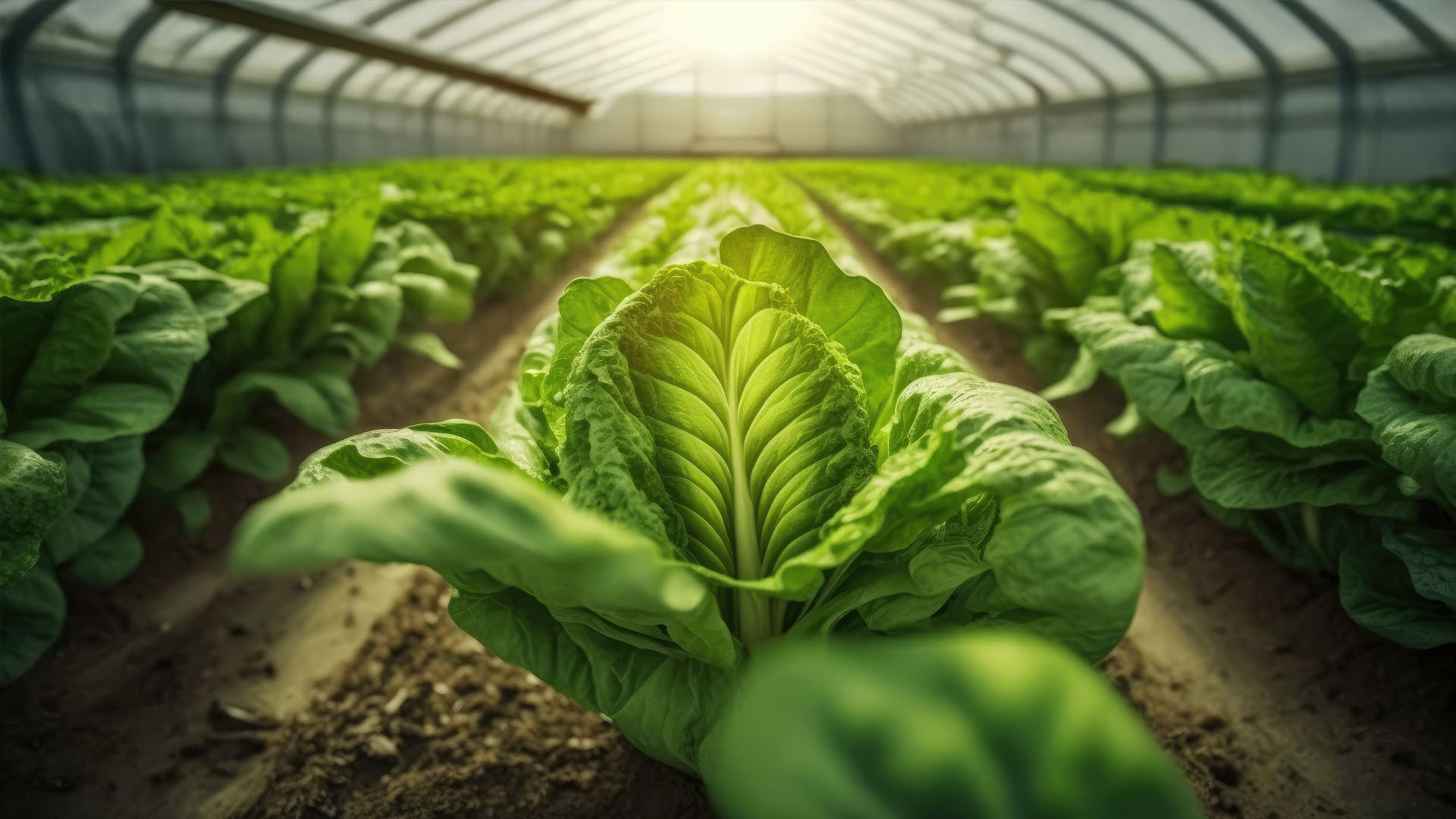
The EU Farm to Fork Policy
September 3, 2023

Skilling, Reskilling and Upskilling: Nurturing the Future of Hospitality Education in Malta
September 2, 2023
Carlo Micallef: Pioneering a Sustainable and Resilient Future for Malta’s Tourism Industry
September 12, 2023Article by the Association of Catering Establishments (ACE)
Indeed, the pandemic did bring out the chef in most of us, but in turn, also made us realise the importance of healthy eating. From viral pasta dishes to internet-famous salads, clean eating is on the radar for us all.
Clean eating also gives us a chance to purchase products that are ethical in nature. Such organically sourced products give us an insight into the transparent supply chains. This gave a push to what is known today as ‘Farm to Fork’. This concept means that the food that we eat and its ingredients has directly been sourced from the farm where it was produced. A principle whose roots stretch back to the 1960s and 70s when Americans became increasingly dissatisfied with processed foods that they found bland, yet which has increased in importance and relevance following the COVID-19 pandemic.
The fresh produce used in the farm to fork practice has a significantly lower carbon footprint since the produce is local, seasonal, and harvested directly from the farms, as per the demand. The produce incorporates food freshness, safety, seasonality, and sustainability. Farmers established in the Farm to Fork/Farm to Table practice are mindful of crop rotation, soil nutrition, zero waste. Produce coming from these farms is far superior to those found in superstores, which are infused with chemicals to last longer and come from miles away.
An importance which is also evident from the emphasis made by the European Union with its European Green Deal aiming to make food systems fair, healthy and environmentally-friendly.
Food systems cannot be resilient to crises such as the COVID-19 pandemic if they are not sustainable. We need to redesign our food systems which today account for nearly one-third of global GHG emissions, consume large amounts of natural resources, result in biodiversity loss and negative health impacts (due to both under- and over-nutrition) and do not allow fair economic returns and livelihoods for all actors, in particular for primary producers.
Putting our food systems on a sustainable path also brings new opportunities for operators in the food value chain. New technologies and scientific discoveries, combined with increasing public awareness and demand for sustainable food, will benefit all stakeholders. The EU wants to address many food-related issues within a single framework.
The main objectives of its policy include:
The EU’s F2F plan potentially benefits everyone by improving food quality, environmental sustainability and land use. However, specific groups of people stand to benefit more than others.
Reductions in pesticide usage, for instance, may protect local farmers. Evidence suggests that over-exposure to certain types of hazardous pesticides can lead to respiratory and neurological diseases.
Companies in the supply chain also stand to benefit. The EU wants to improve food security by boosting the traceability of products as they make their way through the food chain. Consumers and agents in the supply chain will be able to directly interact with products to view their origin. Moreover, the shift to healthy, organic meals may help to improve human health. Growing evidence suggests that plants require stress to generate a full complement of nutrients. So organic plants exposed to regular insects and wild plants may boost human nutrition.
Lastly, the F2F strategy will support local farmers and fishers in the EU food chain who are undergoing the transition to sustainable practices. Far from being a regulatory burden, it should ultimately create additional opportunities for their small businesses.
Currently, the Common Agricultural Policy and Common Fisheries Policies provide incomes to local EU farmers to support ecosystems and their livelihoods. Unfortunately, it is not yet clear precisely what steps farmers will need to take to benefit from the F2F strategy.
To make F2F more concrete, the EU has put forward some targets that it hopes to meet as the plan unfolds.
These include:
Thus, the F2F strategy aims to make food production more sustainable and reduce reliance on artificial means of increasing yields. High technology is not an explicit part of the plan, so it is not clear how updates on innovations will affect EU targets. It is likely that agriculture will require greater use of technology throughout the supply chain if it wants to meet these ambitious goals.
The COVID-19 pandemic has served as an eye opener on a number of key issues. It surely made us acutely aware of what we consume and how we consume it, be it material things for daily use and most importantly, food.
Indeed, the pandemic did bring out the chef in most of us, but in turn, also made us realise the importance of healthy eating. From viral pasta dishes to internet-famous salads, clean eating is on the radar for us all.
Clean eating also gives us a chance to purchase products that are ethical in nature. Such organically sourced products give us an insight into the transparent supply chains. This gave a push to what is known today as ‘Farm to Fork’. This concept means that the food that we eat and its ingredients has directly been sourced from the farm where it was produced. A principle whose roots stretch back to the 1960s and 70s when Americans became increasingly dissatisfied with processed foods that they found bland, yet which has increased in importance and relevance following the COVID-19 pandemic.
The fresh produce used in the farm to fork practice has a significantly lower carbon footprint since the produce is local, seasonal, and harvested directly from the farms, as per the demand. The produce incorporates food freshness, safety, seasonality, and sustainability. Farmers established in the Farm to Fork/Farm to Table practice are mindful of crop rotation, soil nutrition, zero waste. Produce coming from these farms is far superior to those found in superstores, which are infused with chemicals to last longer and come from miles away.
An importance which is also evident from the emphasis made by the European Union with its European Green Deal aiming to make food systems fair, healthy and environmentally-friendly.
Food systems cannot be resilient to crises such as the COVID-19 pandemic if they are not sustainable. We need to redesign our food systems which today account for nearly one-third of global GHG emissions, consume large amounts of natural resources, result in biodiversity loss and negative health impacts (due to both under- and over-nutrition) and do not allow fair economic returns and livelihoods for all actors, in particular for primary producers.
Putting our food systems on a sustainable path also brings new opportunities for operators in the food value chain. New technologies and scientific discoveries, combined with increasing public awareness and demand for sustainable food, will benefit all stakeholders. The EU wants to address many food-related issues within a single framework.
The main objectives of its policy include:
- Reducing food fraud in the supply chain (ensuring that consumers get the products that they pay for)
- Cutting down on good loss and waste (to enable the EU to meet its sustainability goals)
- Promoting the shift to healthy, local and more sustainable foods and reducing reliance on cheap staples that damage population health (such as refined sugars, flours and oils)
- Improving food security and preventing product tampering
- Reducing the environmental impact of food production to meet long-term climate goals
- In order to implement the F2F concept successfully, countries will need to innovate on multiple levels. They will need to invest in knowledge sharing, advisory services, innovation and basic research. Critically, they should work with industry partners who have the necessary expertise to bring their plans to fruition.
The EU’s F2F plan potentially benefits everyone by improving food quality, environmental sustainability and land use. However, specific groups of people stand to benefit more than others.
Reductions in pesticide usage, for instance, may protect local farmers. Evidence suggests that over-exposure to certain types of hazardous pesticides can lead to respiratory and neurological diseases.
Companies in the supply chain also stand to benefit. The EU wants to improve food security by boosting the traceability of products as they make their way through the food chain. Consumers and agents in the supply chain will be able to directly interact with products to view their origin. Moreover, the shift to healthy, organic meals may help to improve human health. Growing evidence suggests that plants require stress to generate a full complement of nutrients. So organic plants exposed to regular insects and wild plants may boost human nutrition.
Lastly, the F2F strategy will support local farmers and fishers in the EU food chain who are undergoing the transition to sustainable practices. Far from being a regulatory burden, it should ultimately create additional opportunities for their small businesses.
Currently, the Common Agricultural Policy and Common Fisheries Policies provide incomes to local EU farmers to support ecosystems and their livelihoods. Unfortunately, it is not yet clear precisely what steps farmers will need to take to benefit from the F2F strategy.
To make F2F more concrete, the EU has put forward some targets that it hopes to meet as the plan unfolds.
These include:
- Transitioning 25 percent of all member state farms to organic by 2030
- Reducing total EU sales of antibiotics for farmed animals and aquaculture by 50 percent
- Cutting down on the use of chemical pesticides by half by 2030
- Reducing soil nutrient losses by 50 percent by 2030 while ensuring no loss of soil fertility
- Reducing the usage of chemical fertilisers by 20 percent by 2030
Thus, the F2F strategy aims to make food production more sustainable and reduce reliance on artificial means of increasing yields. High technology is not an explicit part of the plan, so it is not clear how updates on innovations will affect EU targets. It is likely that agriculture will require greater use of technology throughout the supply chain if it wants to meet these ambitious goals.

Omar Vella is the current secretary of the Association of Catering Establishments (ACE). He is also director of Maltapoint Ltd. and the Chief Executive Officer of Union Print Co. Ltd.. Omar is also editor of several local business, lifestyle and food magazines.
ACE (Association of Catering Establishments) represents a wide spectrum of entrepreneurs ploughing their trade in either of the following commercial outlets: snack bars, cafes, kiosks, casual diners, catering operations located within clubs, fast food take-away, food delivery outlets and fine dining restaurants.
For more information visit https://acemalta.org.mt
Click here to see Horeca Issue 12 online



